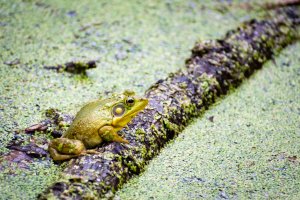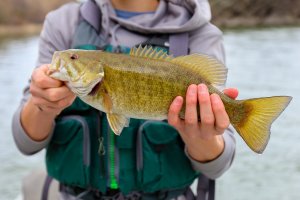Maintaining Water Quality: A Tough Job and Everyone’s Got To Do It
September 7, 2022-Erin Parker, Interpretive Services Supervisor
Boil water advisories. E. coli counts closing swimming beaches. Droughts. Floodwater. Water concerns are in the news, both locally and globally, all the time. Often the term “water quality” is part of the story. But what is water quality and why does it matter? How do we maintain water quality for all of the ways that water is necessary for society to function?
Water quality is defined as the biological, chemical, and physical components of water as measured against the standard for which the water is being used. In other words, water that is used for recreation such as swimming or kayaking would be measured against different standards than water that is used for drinking and household use. Water quality can tell us if our tap water is safe to drink, if we can swim at a beach on a particular day, if the fish we harvest are ok to consume, or if the ecosystem can support a range of species. Water that isn’t safe for drinking can still meet the standards for high water quality for sustaining a thriving aquatic environment and water that meets a high standard for aquatic organisms likely still doesn’t meet the standard for drinking water!

One of the many challenges of maintaining and supporting high water quality is that all life depends on water- which means that there are a lot of “user groups” competing for the same resource. We want to have water for fish, birds, and amphibians; for outdoor recreation activities; for agriculture and industry; and for all of our residential and commercial use, too. Here in the Metroparks, we want to have open, clean beaches and pools; opportunities for fishing and consumption of those fish; habitat for our diverse Southeastern Michigan wildlife; and potable water for drinking!
Maintaining water quality for a variety of uses is a tough job- and everyone has to do it to make it successful. In the Metroparks, monitoring for water quality happens at beaches and pools as well as managing aquatic plants and working with regional partners to ensure that water in drinking fountains and sinks is clean and drinkable. Unfortunately, water doesn’t follow human boundaries like park borders, and many things that occur outside of the parks have a big impact within the park.
Parks such as Lake St Clair Metropark with its beautiful beach partner with the Macomb County Health Department to conduct checks of the water. If the water quality tests show a problem, park staff and additional partners move into action. Some of these action steps are long-term, such as reducing the parking lot size and directing the flow of stormwater off the parking lot into natural, plant-filled swales to help filter the water before it enters the lake. Some of the action steps are more immediate, such as using trained dogs to annoy the geese congregating near the beach. Reducing the numbers of geese reduces how much of their waste enters the lake, which can have a positive impact on water quality parameters. Other Metroparks, such as Kensington and Stony Creek, may treat aquatic plants to reduce the spread of invasives and prevent eutrophication- a process where those aquatic plants and algae die, decompose, and the decomposing microorganisms use up much of the water’s dissolved oxygen, then depriving fish and other aquatic life of the oxygen they need to survive.
Supporting water quality for fish consumption is yet another task done in partnership with a variety of external partners. Fish “do not eat” advisories help protect people from consuming legacy chemicals, such as PFOS (Perfluorooctane sulfonate) that may enter into park waterways from the Huron or Clinton river systems. Testing of fish tissue can show the presence of these chemicals, used in a variety of products from waterproofing to firefighting, even when the levels of the same chemicals in the water are considered low or nonexistent. Finding a balance between safety and access is a big challenge, especially with so many different interests in our water at stake!

Managing water quality is up to all of us. Simple things like reducing trash and litter on the ground helps prevent it from entering our waterways while big policy changes protect all of us from chemical entering our drinking water. But we all have a role to play! Visitors with pets can clean up and dispose of dog waste properly to keep it from being washed into the same water where other users swim, kiteboard, fish, or paddle. Patrons that fish or boat can make sure their gear and vessels are clean to reduce the spread of non-native species from one body of water to another. Within the Metroparks, we can manage aquatic invasives, monitor the water, and reduce runoff from parking lots and roadways to help do our part in maintaining clean water, and good water quality, for all of our diverse needs.
